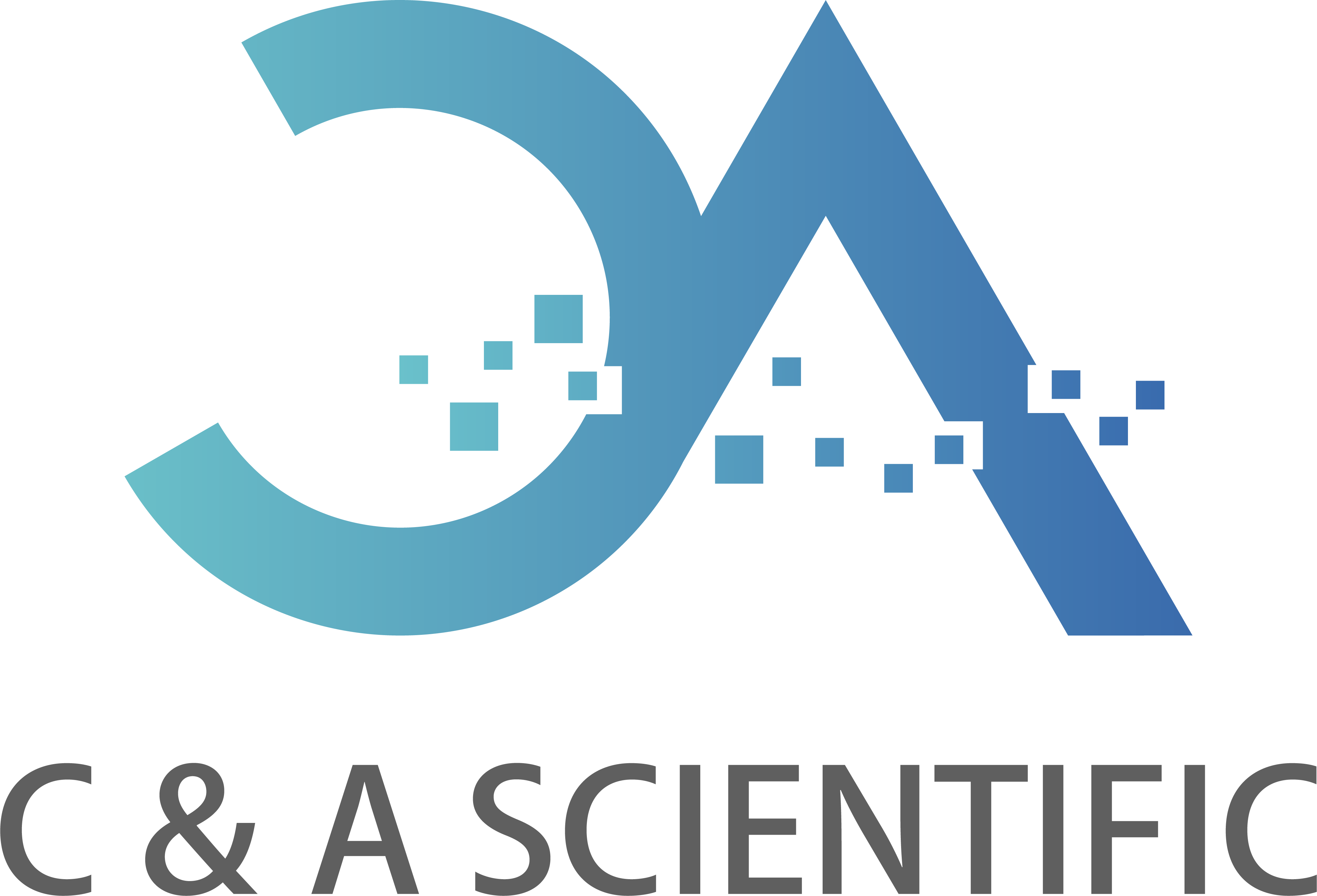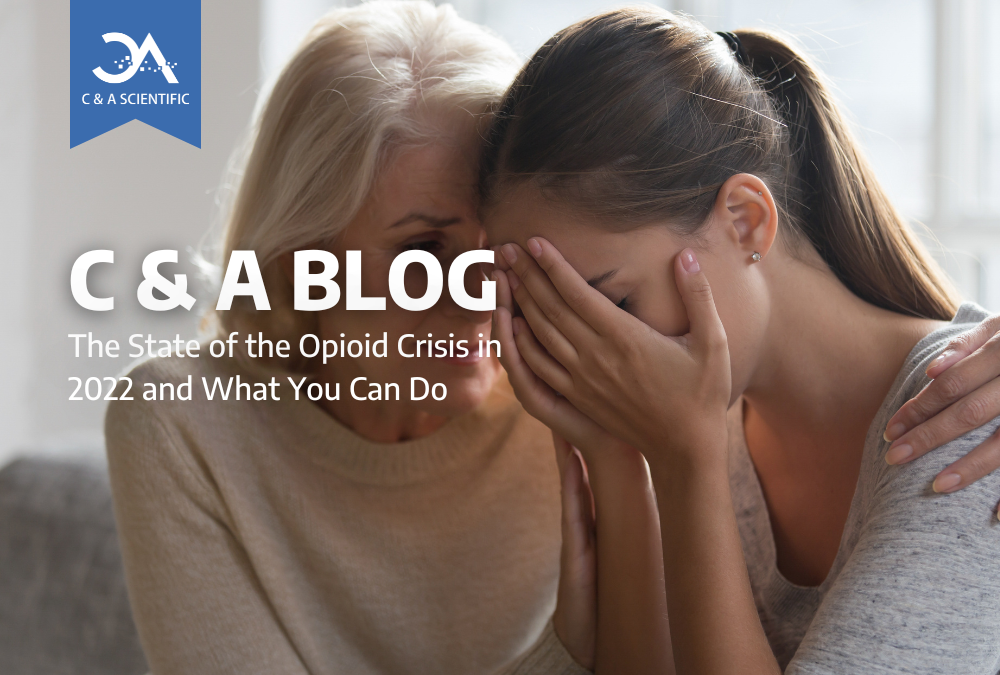The opioid crisis is still ongoing. Projections indicate that at least 1.2 million people in the United States and Canada will die from opioid addiction by 2030 if no changes are made in the pharmaceutical and healthcare industries. In 2022 alone, over 69,000 people in the United States have died from opioid-related causes.
TABLE OF CONTENTS
- How Did the Opioid Crisis Start?
- What Needs to Change?
- Government and Health Care Responses to the Opioid Crisis
- C & A Scientific’s Commitment
How Did the Opioid Crisis Start?
The opioid crisis started in the mid-90s when Purdue Pharma received approval from the Food and Drug Administration (FDA) to begin distributing OxyContin.
OxyContin is a prescription painkiller used to treat moderate to intense pain from injuries, cancer, and other illnesses. OxyContin is an opioid and has a high risk of reliance and addiction. The acceptance of this potent drug led to a wave of drug approvals for other similar opioids.
Opioids are drugs that reduce pain. These intense painkillers can lead to reliance on the medication and severe side effects, such as a loss of consciousness and slowed heart rate.
When Purdue Pharma showed this drug to regulators, they falsely described it as less addictive than other opioids. After FDA approval, it’s typically left up to the pharmaceutical industry to warn about drug risks. Purdue Pharma and other big pharmaceutical firms have failed to educate the public about the danger of opioids.
What Needs to Change?
The pharmaceutical industry needs to curb the influence of pharmaceutical representatives on general practitioners. As the practice currently stands, pharmaceutical representatives often offer kickbacks or incentives for doctors to use their drug instead of opting for another treatment method. While direct money offers are illegal, pharmaceutical representatives usually pay physicians for speaking, consulting, meals, or travel.
The government should place and enforce laws to prevent these arrangements from occurring. If doctors prescribe medications only as needed, it is difficult for patients to continue abusing opioids. Additionally, addiction prevention training should be mandatory for those who work in healthcare and the pharmaceutical industry.
There also needs to be further regulations regarding the pharmaceutical representation of drug characteristics. Purdue Pharmaceutical represented OxyContin as less addictive than it was, which led to widespread prescription of the drug.
Even if drugs have passed regulatory measures, there needs to be more transparency from doctors and pharmaceutical companies regarding potentially hazardous side effects of drugs. While this strategy does not account for the underground use of opioids, it will, at the very least, reduce direct overexposure to these drugs.

Government and Healthcare Provider Responses to the Opioid Crisis
The government has tasked the Office of the Inspector General for the Department of Health and Human Services with performing high-level audits to review fraud in the pharmaceutical and healthcare industry and strengthen preexisting prevention programs.
The Office of the Inspector General also identifies and holds anyone accountable who engages in fraud while empowering and collaborating with healthcare partners to use education programs and data sharing.
At the individual hospital and clinic level, the Department of Health and Human Services has rolled out a variety of educational materials for healthcare providers to follow regarding prescription drug misuse. They have also provided Prescription Drug Monitoring Programs used by electronic databases to track the dispersal of prescription drugs to various patients.
The Center for the Application of Prevention Technologies is another Health and Human Services Internal Program that promotes prevention science at state, tribal, and municipal levels. Another program the Department of Health and Human Services promotes is National Prevention Week in May, which calls attention to the need to prevent substance use at the institutional and home level.
While not all-inclusive, these efforts may still positively impact preventing opioid addiction. Risk assessment and mitigation at the personal provider level are also crucial for preventing addiction before it starts.
C & A Scientific’s Commitment
C & A is proud to help you and your family navigate the medical world. We intentionally provide information to keep you updated on the latest medical news. To learn more about opioid addiction recovery, check out our blog Myths about Addiction and How to Combat Addiction in Your Community.
C & A Scientific is a dedicated leader in improving the health and minds of people worldwide. We supply over 700 award-winning medical and STEM-inspired products to distributors and retailers seeking sensational customer service. Learn more about us and our story here.

